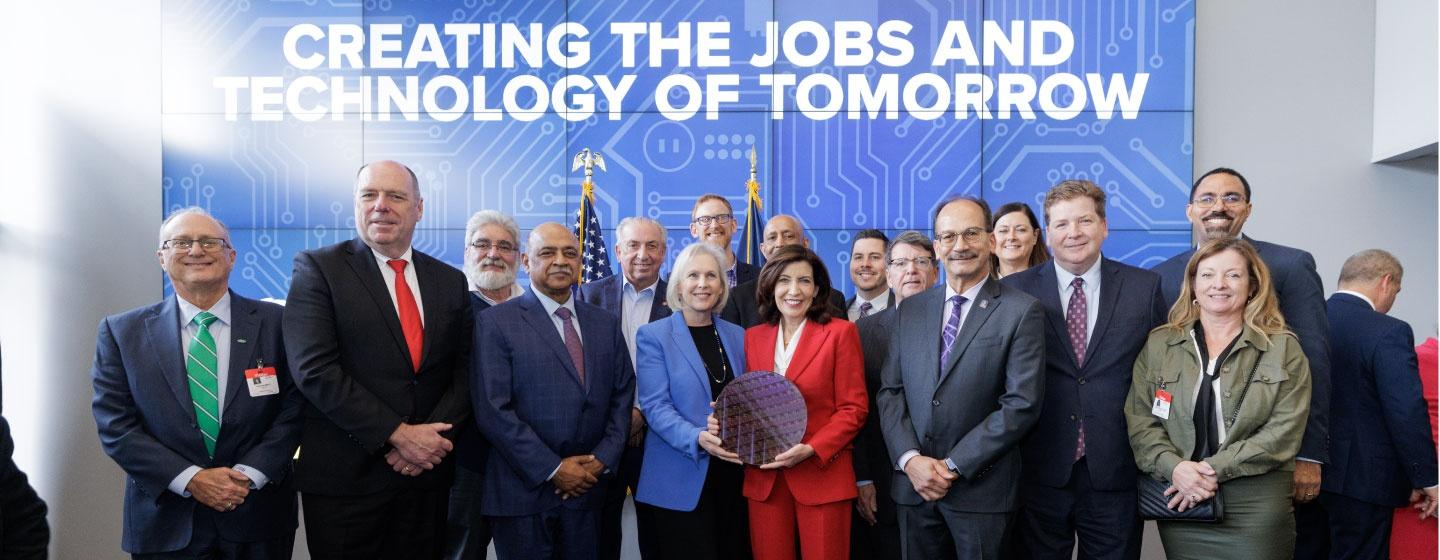New York Gov. Kathy Hochul Announces $10 Billion Partnership at SUNY NanoTech in Albany

New York Gov. Kathy Hochul Announces $10 Billion Partnership at SUNY NanoTech in Albany
SUNY NanoTech is getting a big boost that could help it become a national research hub.
Governor Kathy Hochul was in Albany Monday to announce a $10 billion partnership with leading brands in the semiconductor industry to expand semiconductor research and development.
“This historic investment will establish next generation Research and Development Center right here, right here in Albany at the NanoTech complex, the most advanced in the country, that will fund the construction of cutting edge equipment," said Hochul. "The first and only of its kind in North America. And you ready for the name? I have to ask who came up with this name? Raise your hand if you really want to. ‘High Numerical Aperture Extreme Ultraviolet Lithography Center,’ OK? And don't ask me to say that twice.”
The Democrat says under the new initiative, NY CREATES will acquire and install a High NA EUV lithography tool, designed and manufactured by ASML, at its Albany NanoTech Complex, where industry partners including Micron, IBM, Applied Materials, Tokyo Electron, and others will use the most advanced semiconductor equipment ever made to power tomorrow's mobile phones and computers.
“Semiconductors are absolutely central to our lives, even though you don't think about them on a regular basis," Hochul said. "And the cutting edge is constantly evolving, rapidly, rapidly before eyes. Just look no further than the smartphone in your pocket . (Actually don't look at them, it's kind of disruptive.) That one little device has more processing power in it than all the computers combined that existed on our planet 50 years ago. That's amazing. It has 100,000 times the computing power and 9 million times the memory that the computer the Apollo 11 had to land astronauts on the moon. This is in our lifetime, my friends. This is not happening over 50 years, 100 years, this is happening now. And the countries that are able to lead in semiconductors will be at the vanguard of the world's technological future.”
Senate Majority Leader Chuck Schumer says New York is on tap to reap many benefits. “What does this $10 billion investment mean? Three things, jobs. 700 new high-paying jobs. Second, it makes the Capital Region and upstate New York the global leader in chip research, and third, it shows that we can get this National Semiconductor Technology Center,” said Schumer, who has been beating the drum loudly to make SUNY NanoTech the anchor hub for the National Semiconductor Technology Center, created in his CHIPS And Science Act, which was signed into law in August of 2022. Schumer says the law is meant to keep the U.S. on the cutting edge of semiconductor manufacturing and innovation.
"We lost this industry to overseas and good paying jobs," Schumer said. "We lost them to China to Taiwan and other places. But now the industry is coming back. That's why I wrote the CHIPS and Science Bill with upstate New York in mind. And it's so gratifying to see people optimistic, whether it's in Buffalo, Rochester, Utica, Albany, the Capital Region, Central New York, the Hudson Valley. People see hope. They see a future. They see an industry that they know will grow and expand. When their kids get a job here they know, not only is it good paying, but it's going to stay and have even a greater future. It's so terrific. And, but it's also terrific for America. Because you know, when you do the research, that often sets the rules. And we're going to do the top notch, top of the line, not duplicated anywhere research right here.”
Schumer says Albany NanoTech will be the only facility in North America and one of only two public institutions in the world to employ High NA EUV lithography.
This story was originally published on 12/11/2023 on WBFO.
Related

New York State’s Health Commissioner Has Some Advice for Staying Healthy During the Holidays
New York State Health Commissioner James McDonald says that RSV is the virus that’s circulating the most widely this holiday season, followed by COVID-19 and the flu.


